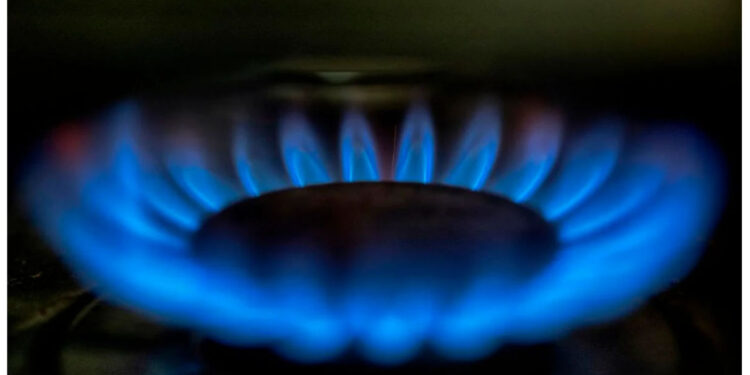California may soon mandate that all new gas stoves sold within the state come with a label that warns users about the potential release of pollutants. These pollutants have been associated with respiratory illnesses.
The state Senate approved a proposal on Monday that mandates the labeling of gas stoves or ranges manufactured or sold online after 2024, or sold in a physical store after 2025. The bill has now been passed on to the state Assembly.
Proponents argue that this legislation is crucial in tackling childhood asthma and other respiratory issues. On the other hand, opponents claim that such legislation is redundant and suggest that the state should prioritize enhancing ventilation systems in buildings to enhance air quality.
Assemblymember Gail Pellerin, a Democrat representing part of Santa Cruz County, emphasized the lack of awareness surrounding the health hazards associated with gas stoves. She stated that despite the increasing amount of evidence available, this information is not widely known. Pellerin believes that the proposed bill will play a crucial role in empowering consumers to make informed decisions when purchasing gas stoves and oven appliances.
The bill was approved primarily with support from members of the same political party, and there was no discussion or debate on the matter.
The label cautions users about the potential risks of inhaling high concentrations of chemicals, including nitrogen dioxide, carbon monoxide, and benzene. It highlights that such exposure may worsen existing respiratory conditions and increase the likelihood of developing leukemia and asthma, particularly in children. Additionally, the label emphasizes the importance of ventilation in reducing the risk of exposure to these chemicals.
Gas stoves have been the subject of intense political debates in recent years, with discussions revolving around climate policy, childhood health, and consumer choice. In 2019, Berkeley, California made headlines by becoming the first city in the United States to implement a ban on natural gas usage in new homes and buildings. However, this law faced legal challenges from the California Restaurant Association, resulting in its suspension by the courts. Despite this setback, the city has recently decided to stop enforcing its policy following a federal court’s refusal to hear an appeal.
According to Jenn Engstrom, the state director of the California Public Interest Research Group, a nonprofit advocacy group, the latest California proposal drew inspiration from a bill in Illinois that has not yet been passed.
In addition to California, New York state is taking steps towards sustainability by enacting a law that prohibits the installation of natural gas stoves and furnaces in most new buildings from 2026 onwards. It is worth noting that last year, the U.S. House of Representatives, which was controlled by Republicans at the time, passed a bill that aimed to prevent the use of federal funds for regulating gas stoves as a hazardous product. However, this bill is still awaiting approval from the Senate.
In the 1980s, California voters passed a law that mandated warning labels on gas stoves and similar items if they contained chemicals known to cause cancer, birth defects, and reproductive harm. However, the new proposal for this year aims to expand the existing label requirements to include information about the potential risks of respiratory illnesses.
According to The Association of Home Appliance Manufacturers, about 40% of households in the United States rely on gas as their primary heat source for cooking. The association, which is against the California bill, shared this statistic.
According to spokesperson Jill Notini, simply adding another label to gas cooking products does not effectively address the underlying issue of indoor air quality during cooking. She emphasizes that all cooking methods, regardless of the heat source used, generate air pollutants, especially at high temperatures.
Improving ventilation during cooking can be achieved by using a range hood that vents to the outdoors, as suggested by the California Air Resources Board. In cases where a range hood is not available, individuals should consider using a fan or opening windows to ensure proper air circulation while cooking.
According to Dr. Lisa Patel, a pediatrician and executive director of the Medical Society Consortium on Climate and Health, there is an increasing body of evidence indicating that chemicals emitted by gas stoves can exacerbate respiratory symptoms in individuals with conditions like asthma. Moreover, there is a growing concern that these emissions may also play a role in the development of childhood asthma cases. Drawing a parallel, Dr. Patel likens the current debate surrounding gas stoves to past battles fought to regulate seatbelts and tobacco products.
“We find ourselves in a situation where something we have long considered a staple in our homes is now being deemed harmful to our health,” Patel remarked. “It’s not that it wasn’t detrimental to our well-being all along, but rather that we lacked the necessary data to support this claim. However, we now have access to the data that confirms it.”










